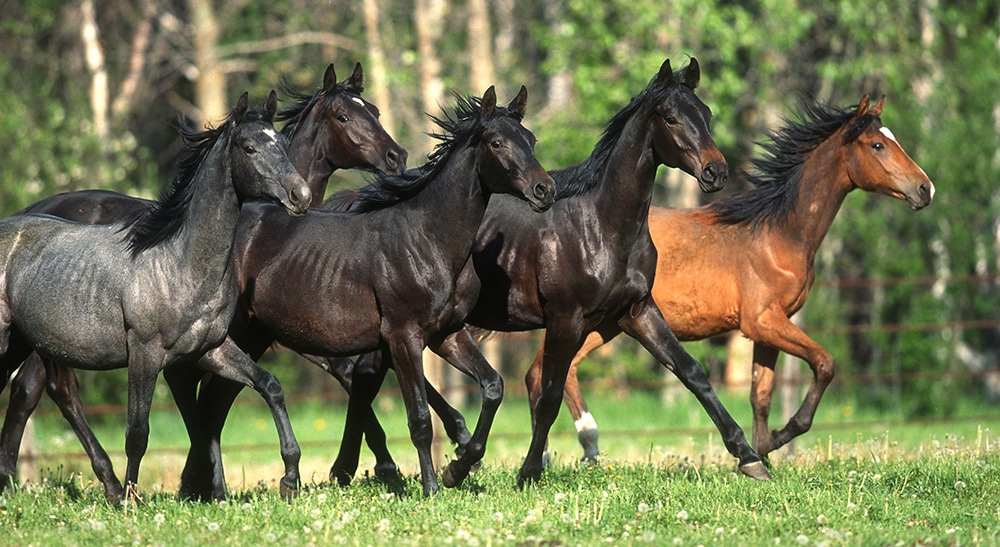The Trakehner is the oldest warmblood breed in the world, dating back 300 years to the foundation of the main stud at Trakehnen in East Prussia in 1732. Originally a small local horse, when crossed with imported English Thoroughbred and Arabian stallions, the result was an athletic, substantial animal whose original purpose was for use as cavalry mount.
As war tactics changed in the early 18th century, requiring a faster, lighter horse, the Trakehnen stud began to systematically breed attractive, tough horses for the military. Meanwhile, East Prussian farmers were breeding them for gruelling daily work in the fields, creating a hard-working, easy-keeping horse. Cross-breeding the military and civilian herds consolidated all the best traits. Performance testing of potential sires lasted a full year; the colts were driven, raced, foxhunted, evented, ridden over jumps and trained in dressage.

Abdullah, a Trakehner stallion, and Conrad Homfeld helped the United States to the team gold, and took an individual silver at the 1984 Summer Olympics in Los Angeles. Photo courtesy American Trakehner Foundation
WWI took a serious toll on the Trakehner population, and in 1944, at the end of WWII, the Russian Army invaded East Prussia, forcing residents to flee and the Trakehnen stud to be evacuated. Tragically, 800 breeding animals were lost to the Russians; in the dead of winter, the “Trek” began; a mass of humanity and 18,000 East Prussian horses heading west to safety. Thousands of human and equine lives were lost; all that remained of the great herds of Trakehnen were 100 individuals.
The years following were spent trying to relocate and catalogue these remaining Trakehners. In 1947, what is now the Trakehner Verband was established and the breed began to recover.
Characteristics
The Trakehner is a noble, elegant riding horse with a lean and expressive head, large, intelligent eye, well-shaped neck, sculpted muscles and correct, clearly defined limbs. Typically standing between 15.3-16.3 hands, they should move with cadenced, ground-covering gaits, both elastic and energetic for jumping and dressage. They can be found in any solid colour.
Well-tempered and obedient, the breeding goal is an uncomplicated, friendly horse that is willing to work, reliable and brave, with a good character and a calm, balanced temperament.
Uses
Trakehners are typically used for dressage, show jumping and eventing, where they are capable of reaching the upper levels. Peron, a Trakehner, led the US Dressage Team to an Olympic bronze medal at Atlanta in 1996. The US show jumper Abdullah won team gold and individual silver medals at the 1984 Olympics and won the 1985 World Cup Final.
For more information, visit:
Trakehner Verband
Canadian Trakehner Horse Society


